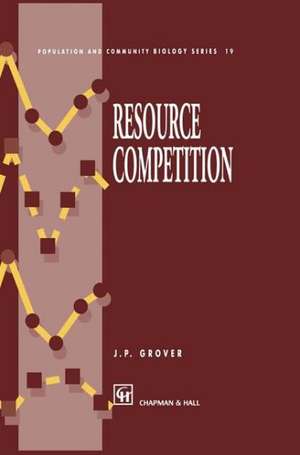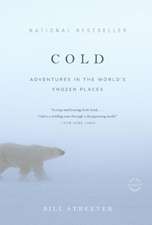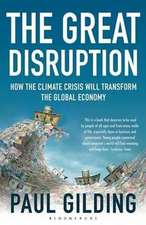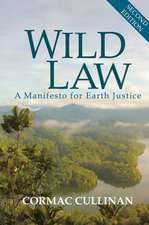Resource Competition: Population and Community Biology Series, cartea 19
Autor James P. Groveren Limba Engleză Hardback – 31 iul 1997
| Toate formatele și edițiile | Preț | Express |
|---|---|---|
| Paperback (1) | 947.35 lei 6-8 săpt. | |
| Springer Us – 2 noi 2012 | 947.35 lei 6-8 săpt. | |
| Hardback (1) | 953.65 lei 6-8 săpt. | |
| Springer Us – 31 iul 1997 | 953.65 lei 6-8 săpt. |
Din seria Population and Community Biology Series
- 15%
 Preț: 646.11 lei
Preț: 646.11 lei - 18%
 Preț: 1224.54 lei
Preț: 1224.54 lei -
 Preț: 404.51 lei
Preț: 404.51 lei -
 Preț: 381.98 lei
Preț: 381.98 lei -
 Preț: 396.62 lei
Preț: 396.62 lei -
 Preț: 393.13 lei
Preț: 393.13 lei -
 Preț: 382.95 lei
Preț: 382.95 lei - 5%
 Preț: 373.47 lei
Preț: 373.47 lei - 18%
 Preț: 1221.38 lei
Preț: 1221.38 lei - 18%
 Preț: 1224.36 lei
Preț: 1224.36 lei -
 Preț: 383.71 lei
Preț: 383.71 lei - 24%
 Preț: 1045.08 lei
Preț: 1045.08 lei - 24%
 Preț: 1033.06 lei
Preț: 1033.06 lei - 18%
 Preț: 1228.62 lei
Preț: 1228.62 lei - 18%
 Preț: 1546.05 lei
Preț: 1546.05 lei - 18%
 Preț: 959.98 lei
Preț: 959.98 lei - 15%
 Preț: 635.80 lei
Preț: 635.80 lei - 18%
 Preț: 950.52 lei
Preț: 950.52 lei - 18%
 Preț: 834.17 lei
Preț: 834.17 lei - 15%
 Preț: 644.95 lei
Preț: 644.95 lei -
 Preț: 405.66 lei
Preț: 405.66 lei -
 Preț: 391.99 lei
Preț: 391.99 lei - 18%
 Preț: 1236.19 lei
Preț: 1236.19 lei - 15%
 Preț: 637.78 lei
Preț: 637.78 lei -
 Preț: 383.93 lei
Preț: 383.93 lei -
 Preț: 397.38 lei
Preț: 397.38 lei - 15%
 Preț: 640.06 lei
Preț: 640.06 lei
Preț: 953.65 lei
Preț vechi: 1162.99 lei
-18% Nou
Puncte Express: 1430
Preț estimativ în valută:
182.48€ • 190.52$ • 151.03£
182.48€ • 190.52$ • 151.03£
Carte tipărită la comandă
Livrare economică 04-18 aprilie
Preluare comenzi: 021 569.72.76
Specificații
ISBN-13: 9780412749308
ISBN-10: 0412749300
Pagini: 342
Ilustrații: X, 342 p.
Dimensiuni: 155 x 235 x 21 mm
Greutate: 0.68 kg
Ediția:1997
Editura: Springer Us
Colecția Springer
Seria Population and Community Biology Series
Locul publicării:New York, NY, United States
ISBN-10: 0412749300
Pagini: 342
Ilustrații: X, 342 p.
Dimensiuni: 155 x 235 x 21 mm
Greutate: 0.68 kg
Ediția:1997
Editura: Springer Us
Colecția Springer
Seria Population and Community Biology Series
Locul publicării:New York, NY, United States
Public țintă
ResearchCuprins
1 Introduction.- 1.1 Resources.- 1.2 A paradigm of population growth.- 1.3 Competition and resources.- 1.4 Classical competition theory.- 1.5 Concluding remarks.- 2 Theoretical and experimental foundations.- 2.1 Introduction.- 2.2 Chemostat models.- 2.3 Competition for a single abiotic resource.- 2.4 Competition for two abiotic resources.- 2.5 Concluding remarks.- 3 Experimental studies of resource competition.- 3.1 Introduction.- 3.2 General overview.- 3.3 Microorganisms.- 3.4 Higher plants.- 3.5 Metazoa.- 3.6 Concluding remarks.- 4 Critiques.- 4.1 Introduction.- 4.2 The logical structure of theory and experimentation.- 4.3 Critiques of resource competition theory.- 4.4 A look ahead.- 5 Nonequilibrium resource competition.- 5.1 General notions.- 5.2 Experimental and theoretical studies of plankton.- 5.3 Competition for biotic resources.- 5.4 Other approaches.- 5.5 Remaining issues.- 6 Competition within food webs.- 6.1 Introduction.- 6.2 A resource-dependent food web.- 6.3 Special cases of the resource-dependent food web.- 6.4 Remaining issues.- 6.5 Conclusions.- 7 Spatial heterogeneity.- 7.1 Introduction.- 7.2 General approaches.- 7.3 Island or site-based models.- 7.4 Continuum models.- 7.5 Stepping-stone models.- 7.6 Empirical and theoretical challenges.- 7.7 Conclusions.- 8 Competition for light.- 8.1 Introduction.- 8.2 The vertical nature of light supply, consumption and photosynthesis.- 8.3 Horizontal aspects of competition for light.- 8.4 Temporal aspects of competition for light.- 8.5 Conclusions and remaining issues.- 9 Resource competition and evolution.- 9.1 Introduction.- 9.2 Purely phenotypic approaches.- 9.3 Genetic approaches.- 9.4 Conclusions and remaining issues.- 10 Applications.- 10.1 Introduction.- 10.2 Water quality management.- 10.3 Medicine.- 10.4Conservation.- 10.5 Conclusions and remaining issues.- 11 Conclusions.- 11.1 Introductory remarks.- 11.2 The current status of resource competition.- 11.3 Concluding remarks.- References.












